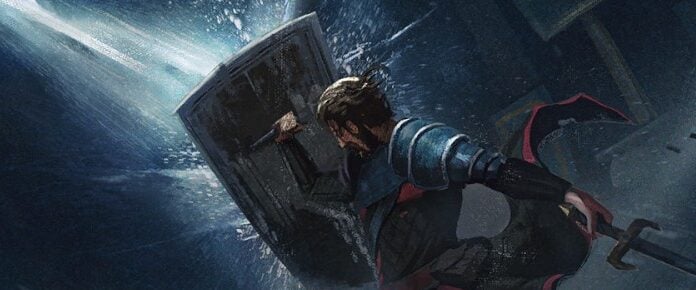
At this year’s E3, Ubisoft creative director Julian Gerighty said team behind The Division 2 tried to learn “everything” from The Division to help make the sequel better. As he reminded me, the original game’s final DLC was especially meaty in terms of PvE content and PvP balance, but it’s the first impressions of the game that mattered most: The initial Dark Zone iteration is still what gamers remember best, and that’s not necessarily a compliment. I myself was not impressed with the original demo back in 2015.
But based on my preview of The Division 2 at this year’s E3, I can say that Gerighty’s team obviously learned quite a bit – and absolutely improved on the original.

A change of scenery
The biggest thing many people will notice in the current flurry of The Division 2 images is the open spaces. Gone are the towering New York skyscrapers that gave the maps a slight claustrophobic feel. Oh, they’re actually still in the game, as Washington, DC, was selected as the new game’s setting thanks to its diverse real-world environment. But the emphasis is much more on the openness of the map. In some ways, that also makes it feel ever so slightly more generic: It’s still a war game, just with more style.
It also has more of an RPG twist, as you level up, choose a (changeable at any time) specialization, can see where your explosion will hit, and have tips on creating combos (my survivalist specialization had a chemical shot that could be comboed with another shot to create a fire hazard). That’s not even including armor and weapon modding.
But it is still a war game. While it doesn’t do all the “right” things we talked about during GDC, civilians are a big part of The Division 2’s PvE dynamic world. You may not get it from the demo, but saving civilians isn’t just an abstract goal; the captured NPCs can actually be freed to take over the area you’re trying to liberate. They may need help with food and other supplies you can deliver to them. They’re not simply objects to interact with but AI with their own programmed desires and goals. So that system brings a lot of context not just to the battles but to the idea of The Division as a whole.
This is what’s sold me on the game as a sequel capable of surpassing the original. It’s one thing to do more variety, new systems, new weapons, support for crafters (yay!), and creative classes. It’s another to integrate them in a way that better simulates stories players can interact with. In theory, to me, that’s art. I’m generally not into more realistic games, but understanding that our battles have some weight, even for a few hours until hostile respawns may take over a civilian outpost again, means everything to me in a persistent world. We’ll have to wait to see just how much weight it has at release, but right now, I’m intrigued.
Familiar feelings in a less familiar place
All that said, some of my impressions of the first Division’s demo have carried over into this second. Loadouts felt like the new classes, and terrain is still highly interactive, but the PvE emphasis better showed the story, though not the dynamic function Gerighty told me about. It’s a limitation of the demo, but an understandable one (especially given that the machines were stressed to the point that we were told not to open the map unless we wanted to risk crashing the demo).
The open space certainly changed the cover system. The look of everything still screams “typical shooter,” but the feel, however, is different. Moving to cover in New York, for example, was always a short dash. In DC, though, you could encounter a long stretch of coverless danger. I am used to playing on the backline during these types of demos, but as my grenades and chem shot showed a pre-fire blast zone with the latter being a set up to combo a fire field, I felt bold enough to take more risks, and it often paid off.
AI was smarter than expected. Once again you have NPCs using cover and dashing out to treat or revive their allies. Reading targets is easy enough. But when mobs also sneak behind you, flank you, press your cover, and ignore blunt distractions, the risk vs. reward in positioning pays off. I did bump into some frustration at having to constantly elect to jump off terrain, as there were plenty of platforms and ledges near cover I was trying to sneak through. I imagine it’s part of the learning curve.
Again, The Division 2 isn’t usually my kind of game, and memories of the Dark Zone PvP situation probably have many readers expecting this game to be Division 1’s launch all over again. But from an MMORPG perspective, I could certainly appreciate the dynamic ideal of the PvE in ways similar to Guild Wars 2. Ubisoft truly does seem to have learned a lot. This may actually be a title to watch, not just for general gamers, but MassivelyOP readers who want challenging PvE in a realistic setting.















